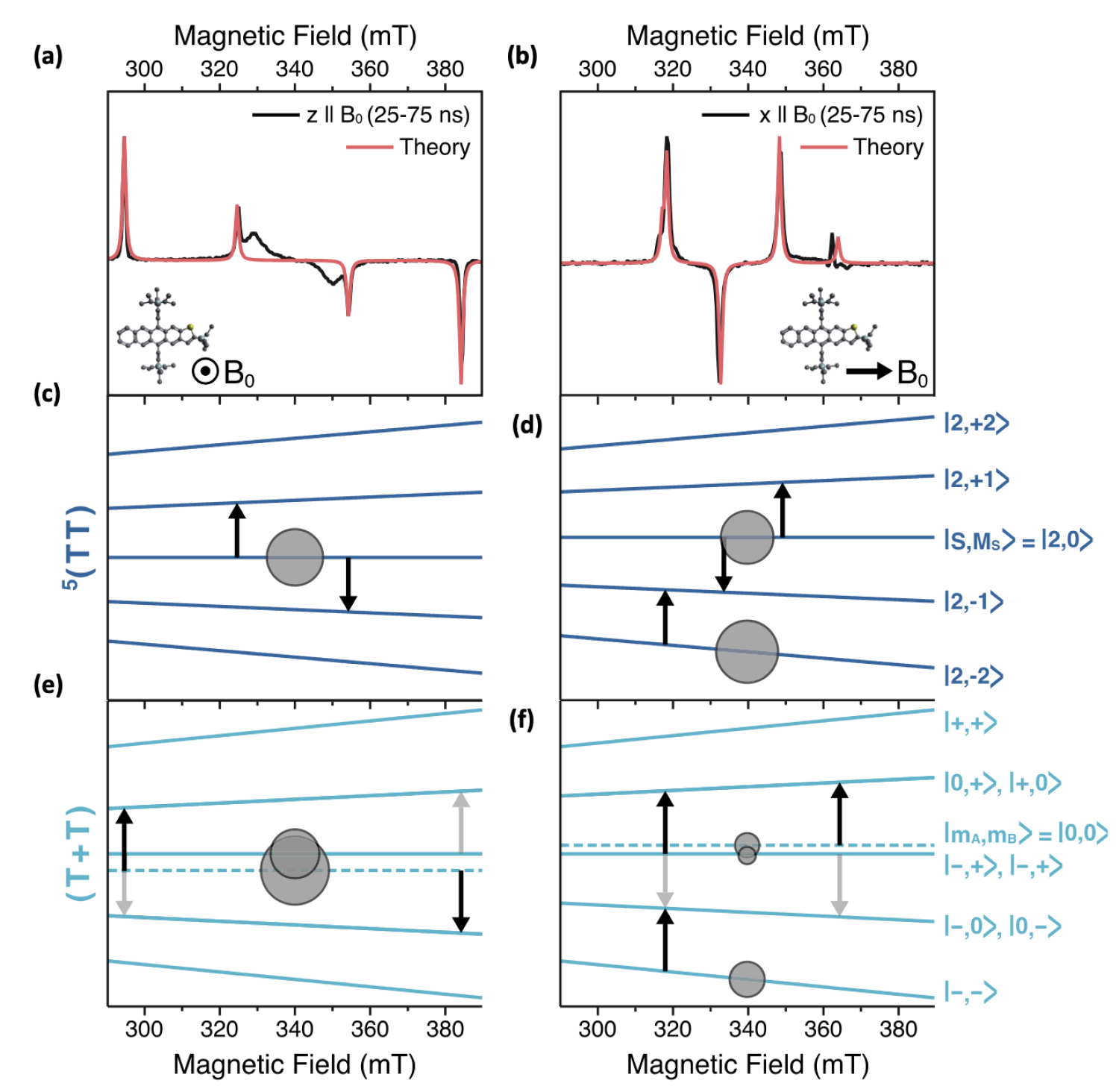Triplet-Pair Spin Signatures from Macroscopically Aligned Heteroacenes in an Oriented Single Crystal

The photo-driven process of singlet fission generates coupled triplet pairs (TT) with fundamentally intriguing and potentially useful properties. The quintet 5TT0 sublevel is particularly interesting for quantum information because it is highly entangled, addressable with microwave pulses, and could be detected using optical techniques. Previous theoretical work on a model Hamiltonian and nonadiabatic transition theory, called the JDE model, has determined that this sublevel can be selectively populated if certain conditions are met. Among the most challenging, the molecules within the dimer undergoing singlet fission must have their principal magnetic axes parallel to one another and to an applied Zeeman field B0. Here, we present time-resolved paramagnetic resonance (TR-EPR) spectroscopy of a single crystal sample of a novel tetracenethiophene compound featuring arrays of dimers aligned in this manner, mounted so that the orientation of the field relative to the molecular axes could be controlled. The observed spin sublevel populations in the paired TT and unpaired (T+T) triplets are consistent with predictions from the JDE model, including preferential 5TT0 formation at z||B0, with one caveat - two 5TT spin sublevels have little to no population. This may be due to crossings between the 5TT and 3TT manifolds in the field range investigated by TR-EPR, consistent with the inter-triplet exchange energy determined by monitoring photoluminescence at varying magnetic fields.
Brandon K. Rugg, Kori E. Smyser, Brian Fluegel, Christopher H. Chang, Karl J. Thorley, Sean Parkin, John E. Anthony, Joel D. Eaves, and Justin C. Johnson Triplet-Pair Spin Signatures from Macroscopically Aligned Heteroacenes in an Oriented Single Crystal PNAS 119 (29), e2201879119 (2022)
AlsoarXiv (2022)

